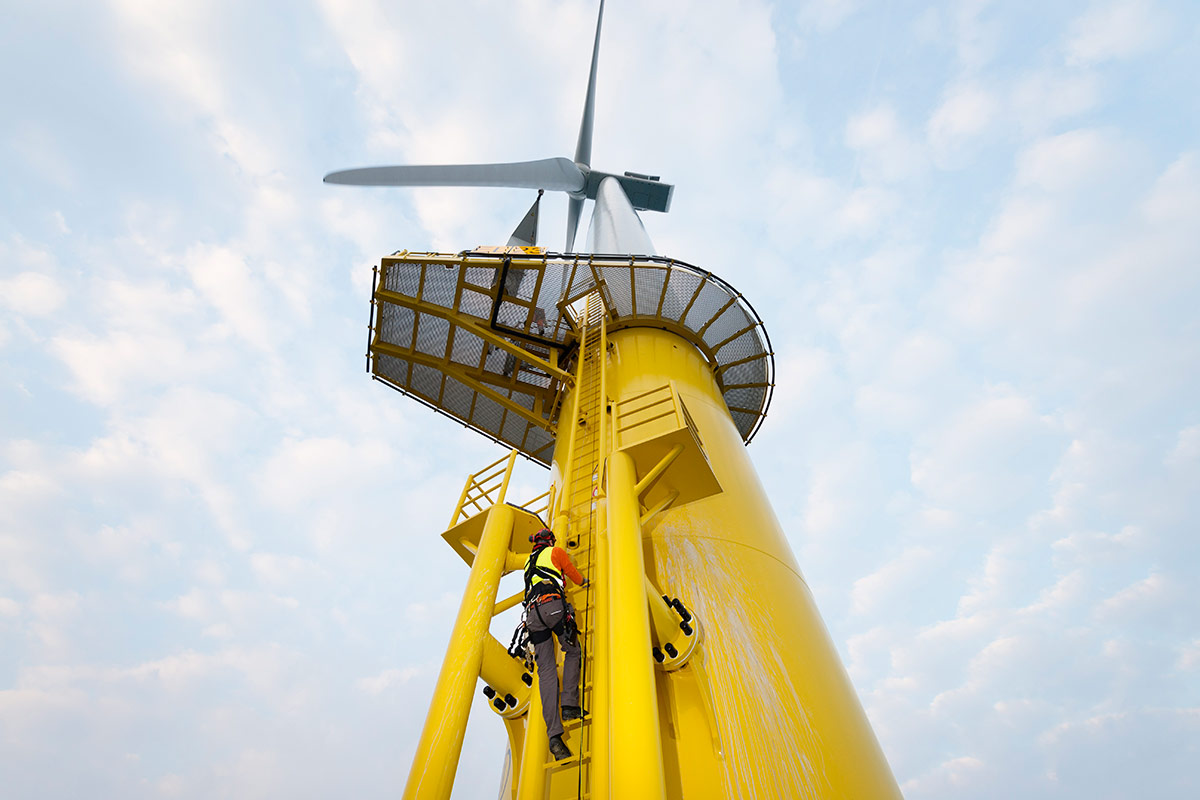Members' interviews
Interview with Yves Van Ingelgem, CEO of Zensor

10 May 2017

©Tineke De Vos
Can you tell our readers a little about your organisation?
Zensor is a scale-up company bringing to the market an integrated integrity management tool for wind turbine support structures. Based on various types of sensors, we collect data, analyse it, interpret it and translate the insights into predictions and proposed actions. Our focus is on towers, foundations, nacelles: everything but the purely rotating or electrical part, both offshore as well as onshore. By looking at the combination of fatigue, corrosion, crack growth, concrete integrity, etc., we provide insights on residual lifetime, risk reduction and maintenance planning. Advanced models allow us to determine the state of non-instrumented positions based on the behaviour of instrumented locations.
Our experience began in 2009 under the umbrella of the VUB (Vrije Universiteit Brussel). Zensor was established as an independent company in 2013. In our early years, we worked in various Belgian offshore wind farms. Our first extensive installation followed in the Eneco Luchterduinen Offshore Wind Farm. At present, the company has activities in Belgium, the Netherlands, France, and the UK. Further expansion is on the way: in order to further support its growth into a European market leader in our field, the company has recently secured a significant capital injection from an experienced Belgian Business Angel and a recently established German investment fund.
What are the most exciting developments you have seen in the wind industry?

The rapid technological evolutions in the offshore industry in many aspects like export cables, turbines, foundation types… We are convinced that it is exactly this evolution that has helped the industry to achieve the significant reductions in LCOE. Looking at it from a distance, one could compare this evolution with the implementation of so-called sprints, the agile approach used at companies like Google and within many start-ups to rapidly implement technological improvements. The associated risks have been covered by engineering ingenuity which in turn has led to further improvements in tools and processes, again to the benefit of all. We think it is safe to say that the learning curve was steep, but exceptionally fast compared to the one experienced by many classical (fossil) sources of energy. This must not be overlooked.
Key in this process is the fact that, due to the uncertainty observed, the offshore wind industry has been one of the first to start equipping their structures with an extensive set of various sensors. Initially triggered to avoid the extensive cost associated with sending out physical inspection teams, the concepts developed these days are now leading to increased cost reduction – first on the generation side, but now also on the CAPEX (design) and the OPEX (Lifetime extension, repowering, O&M…) side.
What changes would you like to see in the wind industry?
Looking at the optimizations that are still possible, a number of things would be very valuable:
- Less strict contractual boundaries that have an adverse effect on the total project cost. A well-known example is on the division between the generator/tower part and the support structures. It is well known that an integrated design with a mutual exchange of insights between both aspects bears a significant cost reduction potential through reduced material use and risks.
- Although already becoming reality, an integrated view on the total project cost rather than CAPEX vs. OPEX as financial decisions made in phase 1 can have a significantly higher financial impact on phase 2 (operations).
- A stable, long-term regulatory framework in order to avoid the impact of risks on the price of electricity and also to reduce the amount of capital burnt in the development of projects that in the end do not receive final permission to build
Going forward, what role do you see your organisation playing in the future development of wind energy?

As referred to above, a sensor-based multi-parameter follow-up of the structures results in a huge increase of the knowledge related to their behaviour and its evolution. Predicting maintenance needs, improved knowledge on operational loads and reducing risks will all contribute to reducing the cost of electricity in the future. Compared to the more traditional energy producing assets, illustrated by the ongoing uncertainty about the state of the nuclear reactors in Belgium, a close and continuous follow-up opens up the possibility to engage in low-risk lifetime extension. Applying this approach on installations for generating energy from renewable resources would represent a significant contribution to making our society more sustainable.
How has WindEurope membership benefited your organisation?
We focus heavily on collaboration for obtaining the optimal solutions for our customers. WindEurope membership allows us to get in contact with various relevant players in the value chain. The multiple events organized by WindEurope are ideal occasions to establish initial contacts in a very efficient way. Additionally, the multiple statistics and outlooks published by WindEurope serve as an excellent tool.
If we look ten years ahead, what do you hope to have achieved?
Although relatively young as a company, Zensor strives to offer its customers in offshore and onshore wind a complete view on the state of health and remaining operational life (and value) of their assets. This will be achieved by looking at the combination of all parameters of relevance. In the not-so-distant future, we aim to grow into a European market leader in this domain and in order to achieve this the company secured a significant capital increase in the first half of 2017. Ten years from now, our ambitions should be a reality.


